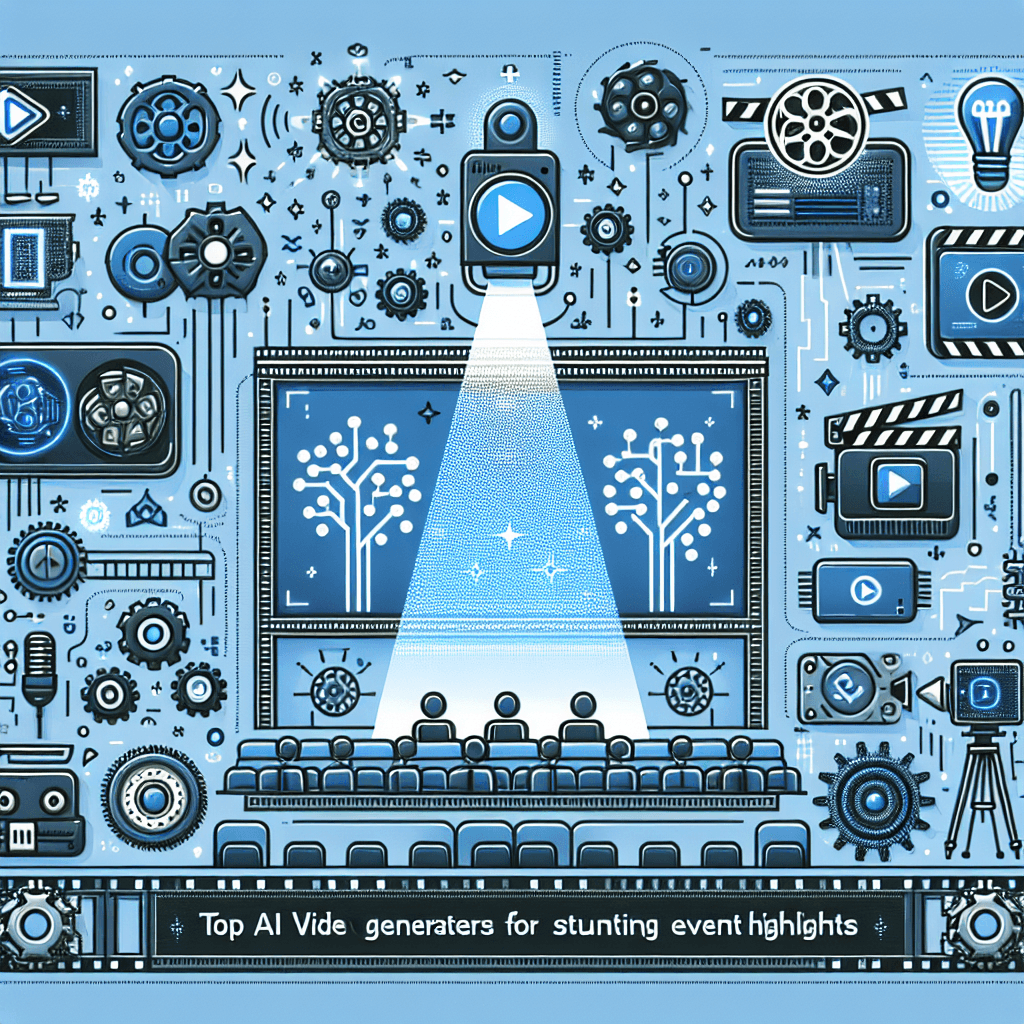In today’s visually-driven world, creating compelling infographics has never been more crucial. Infographics combine information, data, and visuals to create engaging content that is easy to understand and share. With advances in artificial intelligence, several innovative AI image tools are now available to help you craft stunning infographics that captivate audiences and communicate your message effectively. This article explores the top AI image tools specifically designed for creating infographics that stand out in the digital landscape.
The Rise of AI in Infographic Design
Artificial intelligence is revolutionizing various industries, and graphic design is no exception. By utilizing machine learning algorithms, AI tools can analyze patterns and design preferences to produce visual content that resonates with specific audiences. For infographic designers, this means increased efficiency and creativity, allowing them to focus on broader concepts and storytelling rather than repetitive design tasks.
Why Infographics Matter
Before diving into the tools, it’s important to understand the fundamental value of infographics. Infographics simplify complex information by transforming data into visual narratives. This not only enhances understanding but also boosts retention rates. According to studies, people retain information presented visually far better than through text alone, making infographics a powerful tool for marketers, educators, and content creators.
Canva: A Complete Design Hubs
One of the most popular design platforms, Canva integrates AI-driven features to streamline the infographic creation process. With its drag-and-drop interface, users can easily manipulate elements to suit their vision. Canva offers a library of templates, stock photos, and design elements that are constantly updated, ensuring fresh content for every project. The AI features suggest color palettes and layout adjustments based on design principles, helping users create visually appealing infographics without needing extensive design knowledge.
Visme: Infographic Design Made Simple
Visme is a robust tool that allows users to create infographics with ease. It provides customizable templates that cater to various industries. The AI-powered design adjustments help align visuals with the message you want to convey. Users can animate their infographics, making them dynamic and engaging. Furthermore, Visme offers analytics tools, allowing creators to understand how their infographics perform and adjust their strategies accordingly.
Piktochart: Data to Graphics in a Snap
Harnessing the power of AI, Piktochart converts mundane data into visually appealing graphics swiftly. This tool excels at integrating data visualization elements, making it ideal for those who need to represent statistical information dynamically. Users can choose from various templates tailored for reports, presentations, and infographics, while the AI component ensures that design choices enhance comprehension rather than detracting from the message.
Adobe Spark: Design With Adobe Magic
Adobe Spark serves as a user-friendly platform for creating stunning infographics. It simplifies the design process for those unfamiliar with advanced Adobe tools. With Spark, users can access a variety of templates, stock images, and licenses to enhance their creations. The AI features within Spark provide intelligent cropping and layout suggestions, ensuring that even beginners can produce professional-looking content quickly.
Infogram: Data-Driven Visualizations
Infogram, as the name suggests, specializes in creating beautiful data visualizations. This tool offers a user-friendly interface to import data directly from spreadsheets or other sources. With its smart data mapping technology, users can generate engaging infographics that dynamically update as the data changes. This feature is particularly beneficial for businesses that frequently present updated statistics or analytics.
Easel.ly: Simple Yet Effective Designs
For those looking for simplicity without sacrificing quality, Easel.ly delivers. This tool provides an array of templates that can be customized to suit different themes. With the help of AI, Easel.ly recommends design elements based on your chosen template and content type, making it easier to build appealing representations of complex information. The ease of use makes it a favored choice for educators, students, and casual users alike.
Snappa: Fast and Efficient
Amidst the plethora of design tools available, Snappa stands out for its efficiency. Users can create infographics in a matter of minutes using pre-designed layouts that are editable. The AI features in Snappa help refine images and suggest modifications in real-time. Global businesses can rely on Snappa to produce quick, high-quality infographics that can be easily shared across platforms.
Visually: Connecting Creatives with Brands
Visually takes a different approach by connecting clients with talented designers who can create tailor-made infographics. By utilizing AI algorithms, it matches clients with the right freelancers based on project specifications and design requirements. This collaborative effort not only results in stunning infographics but also allows brands to engage with creative professionals who understand their vision.
Venngage: Customizable Infographic Generator
Venngage is an easy-to-use tool offering flexible templates tailored for different purposes. The platform hosts a variety of icons, images, and data visualization tools to enhance the design process. With its AI element, Venngage recommends layouts and color schemes that match the content and subject matter. Additionally, Venngage’s collaboration features allow teams to work together seamlessly, making it perfect for workplace projects.
Designhill: Crowd-Powered Creativity
What sets Designhill apart is its community-driven approach to design. The platform allows users to hold design contests, enabling multiple designers to submit their concepts for your infographic. With AI tools in play, Designhill can help sift through submissions to highlight the most suitable options. This approach blends human creativity with intelligent algorithms, guaranteeing a freshly crafted infographic that stands out.
Fotor: Emphasizing Visual Impact
Fotor is a versatile design tool that focuses not only on infographic creation but encompasses a wide range of graphic design needs. Its AI features assist in image enhancement and layout modifications, helping users create visually impactful infographics. With a comprehensive library of templates and stock photos at disposal, Fotor allows for unique customization that can elevate the overall aesthetic of the infographic.
RelayThat: Continuous Brand Consistency
A unique feature of RelayThat is its focus on brand consistency. Users can upload brand logos, color schemes, and fonts, and RelayThat utilizes AI to maintain these elements across various designs. This ensures that your infographics remain aligned with your brand’s visual identity while allowing for creative freedom in content presentation.
Wave.video: Video Infographics
In a world where video content is king, Wave.video allows users to create video infographics that enhance engagement and shareability. Its AI capabilities enable automatic scene creation and design element suggestions based on the infographic’s theme. Because video content often has higher retention rates than static images, Wave.video’s unique offering allows you to reach a broader audience effectively.
ChartBlocks: Focusing on Data Representation
For those whose infographics heavily rely on data representation, ChartBlocks is an exceptional tool. This platform facilitates the rapid creation of charts and graphs, which can then be integrated into infographics. With intuitive design controls, users can customize the look and feel of their charts while using AI suggestions for optimal design. The platform also allows users to import data from numerous sources, ensuring flexibility.
The Future of Infographic Design
The rapid development of AI technology means we will only continue to witness further enhancements in infographic design. As tools become more sophisticated, the shift towards automated design processes will likely redefine how information is visually shared. Future AI models may even incorporate user feedback more dynamically, adjusting designs in real-time to meet audience preferences.
Understanding Your Audience
Regardless of the tool you choose, understanding your target audience is critical. You must tailor your infographic’s style, tone, and complexity to resonate with your intended readers. Effective infographics communicate clearly and creatively, making it imperative to choose a tool that aligns with these goals.
Final Thoughts: Get Creative with AI Tools
In conclusion, the integration of AI into infographic design has made it easier and more exciting than ever to create engaging visuals. With platforms like Canva, Visme, Piktochart, and others, even those without design skills can produce stunning infographics that captivate and inform. As technology continues to evolve, so too does the potential for creativity in presenting information. Embrace these AI tools, experiment with different features, and watch your infographics come to life in ways you never thought possible.
Unlock the power of AI in infographic design and elevate your content today!








